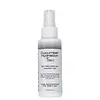What's inside
What's inside
 Key Ingredients
Key Ingredients

 Benefits
Benefits

 Concerns
Concerns

 Ingredients Side-by-side
Ingredients Side-by-side

Hamamelis Virginiana Water
AstringentWater
Skin ConditioningAlcohol Denat.
AntimicrobialGlycerin
HumectantPolysorbate 20
EmulsifyingCerium Oxide
Sodium PCA
HumectantCucumis Sativus Fruit Extract
EmollientFructooligosaccharides
HumectantGlucosamine Hcl
Honey
HumectantPhospholipids
Skin ConditioningCommiphora Myrrha Oil
MaskingSphingolipids
EmollientHyaluronic Acid
HumectantBorago Officinalis Seed Oil
EmollientCucumis Sativus Oil
EmollientBenzyl Alcohol
PerfumingPhenoxyethanol
PreservativeParfum
MaskingHamamelis Virginiana Water, Water, Alcohol Denat., Glycerin, Polysorbate 20, Cerium Oxide, Sodium PCA, Cucumis Sativus Fruit Extract, Fructooligosaccharides, Glucosamine Hcl, Honey, Phospholipids, Commiphora Myrrha Oil, Sphingolipids, Hyaluronic Acid, Borago Officinalis Seed Oil, Cucumis Sativus Oil, Benzyl Alcohol, Phenoxyethanol, Parfum
Water
Skin ConditioningGlycerin
HumectantPropanediol
SolventPentylene Glycol
Skin Conditioning1,2-Hexanediol
Skin ConditioningPanthenol
Skin ConditioningAloe Barbadensis Leaf Juice
Skin ConditioningCeramide NP
Skin ConditioningEctoin
Skin ConditioningCamellia Sinensis Leaf Extract
AntimicrobialCentella Asiatica Extract
CleansingCucumis Sativus Fruit Extract
EmollientAllantoin
Skin ConditioningSqualane
EmollientButyrospermum Parkii Butter
Skin ConditioningOlea Europaea Fruit Oil
MaskingTocopheryl Acetate
AntioxidantEthylhexylglycerin
Skin ConditioningButylene Glycol
HumectantHydrogenated Lecithin
EmulsifyingBehenyl Alcohol
EmollientPolyglyceryl-3 Methylglucose Distearate
EmulsifyingCetearyl Alcohol
EmollientInulin Lauryl Carbamate
Emulsion StabilisingGlycolipids
Skin ConditioningCaprylic/Capric Triglyceride
MaskingMethyl Diisopropyl Propionamide
MaskingCitric Acid
BufferingSodium Benzoate
MaskingPotassium Sorbate
PreservativeTocopherol
AntioxidantWater, Glycerin, Propanediol, Pentylene Glycol, 1,2-Hexanediol, Panthenol, Aloe Barbadensis Leaf Juice, Ceramide NP, Ectoin, Camellia Sinensis Leaf Extract, Centella Asiatica Extract, Cucumis Sativus Fruit Extract, Allantoin, Squalane, Butyrospermum Parkii Butter, Olea Europaea Fruit Oil, Tocopheryl Acetate, Ethylhexylglycerin, Butylene Glycol, Hydrogenated Lecithin, Behenyl Alcohol, Polyglyceryl-3 Methylglucose Distearate, Cetearyl Alcohol, Inulin Lauryl Carbamate, Glycolipids, Caprylic/Capric Triglyceride, Methyl Diisopropyl Propionamide, Citric Acid, Sodium Benzoate, Potassium Sorbate, Tocopherol
 Reviews
Reviews

Ingredients Explained
These ingredients are found in both products.
Ingredients higher up in an ingredient list are typically present in a larger amount.
This extract comes from cucumber. Cucumbers are mostly made up of water (95%), and the other 5% is composed of: vitamin C, caffeic acid, fatty acids, amino acids, and other minerals.
Cucumbers have anti-inflammatory, barrier repair, and hydrating properties.
They contain shikimate dehydrigenase, an enzyme shown to help reduce inflammation and soothe the skin.
The amino acids found in cucumbers help nourish our skin's natural acid mantle (it's an important part of our skin barrier). This slightly acidic film acts as a barrier to protect us from bacteria, viruses, and other contaminants.
Unless you have an allergy to cucumbers, this is generally a non-irritating ingredient.
Fun fact: Cucumis Sativus is native to South Asia and can now be found on every continent.
Learn more about Cucumis Sativus Fruit ExtractGlycerin is already naturally found in your skin. It helps moisturize and protect your skin.
A study from 2016 found glycerin to be more effective as a humectant than AHAs and hyaluronic acid.
As a humectant, it helps the skin stay hydrated by pulling moisture to your skin. The low molecular weight of glycerin allows it to pull moisture into the deeper layers of your skin.
Hydrated skin improves your skin barrier; Your skin barrier helps protect against irritants and bacteria.
Glycerin has also been found to have antimicrobial and antiviral properties. Due to these properties, glycerin is often used in wound and burn treatments.
In cosmetics, glycerin is usually derived from plants such as soybean or palm. However, it can also be sourced from animals, such as tallow or animal fat.
This ingredient is organic, colorless, odorless, and non-toxic.
Glycerin is the name for this ingredient in American English. British English uses Glycerol/Glycerine.
Learn more about GlycerinWater. It's the most common cosmetic ingredient of all. You'll usually see it at the top of ingredient lists, meaning that it makes up the largest part of the product.
So why is it so popular? Water most often acts as a solvent - this means that it helps dissolve other ingredients into the formulation.
You'll also recognize water as that liquid we all need to stay alive. If you see this, drink a glass of water. Stay hydrated!
Learn more about Water